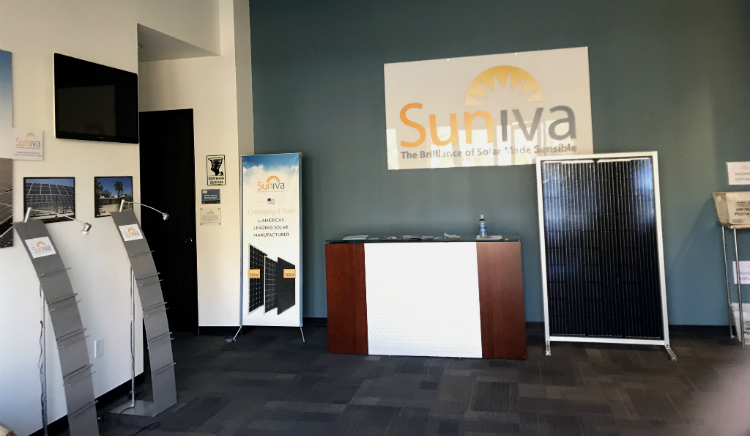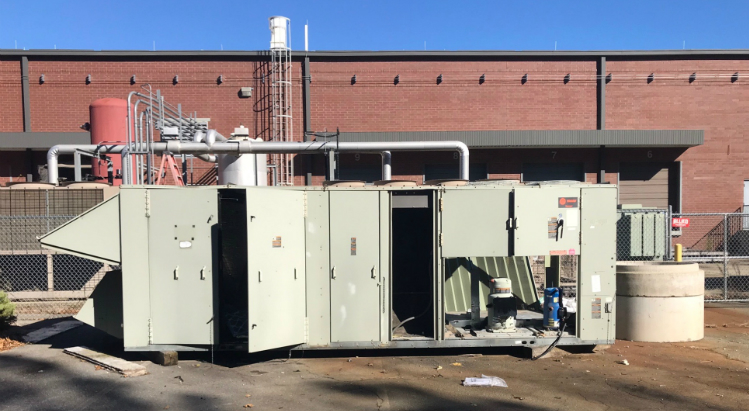The tariffs that President Trump imposed on solar equipment nearly a year ago may be recharging solar manufacturing in the U.S.
Since they’ve been in place, however, fewer solar panels are being installed across the country, according to an industry report released last week. And the installation slowdown already appears to be costing quite a few more jobs than the manufacturing rejuvenation is even promising in the future.
Meanwhile, the Georgia plant owned by the manufacturer whose 2017 complaint prompted the tariffs sits idle. Many of its assets have been sold off in pieces, and some equipment is strewn as scrap behind unused loading docks.
The tariffs — in the form of a 30 percent tax on imported crystalline silicon photovoltaic cells and panels — have hit different segments of the installation industry in different ways. According to last week’s report from Wood Mackensie Power & Renewables and the Solar Energy Industries Association, the total gigawatts added from new residential and non-residential arrays has been flat through the first three quarters of the year. But utility-scale projects are now being added more slowly than at any time since 2015. At the same time, solar developers have been adjusting their plans based on such other factors as a sunsetting federal tax credit and annual 5 percent stepdowns in the tariffs that begin this February.
The varied impact reflects the share of equipment that goes into the cost structure for different types of solar projects. Much of the expense for rooftop arrays is tied to sales, design and other one-time costs. On utility-scale solar farms, however, a larger chunk of the money goes into equipment. So, relatively speaking, the tariffs are hitting big solar farms hardest.
“So far, we have seen at least 9,000 solar jobs be lost or not hired for as a result of the Section 201 tariffs on solar cells and modules [or panels],” SEIA spokesman Morgan Lyons wrote in an email after last week’s report was issued. “Those are installers, developers, engineers, etc., primarily in the utility-scale market.”
Before the tariffs went into effect in early February, SEIA had warned that they would cost the U.S. 23,000 jobs. The trade group will release a more complete “Solar Jobs Census” early next year.
 In contrast to the installers, manufacturers are adding jobs and capacity. At least three Asia-based companies and one U.S. company have announced new plants since the tariffs were imposed. The manufacturers have promised eventually to create 1,360 jobs at those four facilities. That would be significant in a segment of the industry that appeared to be on its last legs just a year ago. In addition, several existing plants that were teetering on the edge of closing have hung on and even announced expansions.
In contrast to the installers, manufacturers are adding jobs and capacity. At least three Asia-based companies and one U.S. company have announced new plants since the tariffs were imposed. The manufacturers have promised eventually to create 1,360 jobs at those four facilities. That would be significant in a segment of the industry that appeared to be on its last legs just a year ago. In addition, several existing plants that were teetering on the edge of closing have hung on and even announced expansions.
But the rebound came too late to revive two manufacturing plants owned by Suniva Inc., the company that filed the trade complaint that led to the tariffs. Founded in 2007 by Georgia Tech professor Ajeet Rohatgi, Suniva opened a plant adjacent to its Norcross, Ga., headquarters in 2008. In 2014, it added another one in Saginaw, Mich.

Just as Suniva was expanding, however, less expensive imports were beginning to dominate the U.S. solar market. In April 2017, the company filed its complaint with the U.S. Trade Commission, arguing that the imports were making it impossible for domestic manufacturers to compete.
Then, soon after Trump announced the tariffs, Suniva’s main U.S. creditor convinced a bankruptcy court to allow the company’s manufacturing equipment to be auctioned off. From spring through fall, the creditors scrapped with each other over the how the scramble assets.
In Norcross, Suniva’s 115,000-square-foot building now sits vacant. On a visit early last week, random pieces of wrecked machinery could be seen lining the drive at the rear of the building. A small stack of the tempered glass used in solar panels stood on a pallet next to a loading ramp. Rusted paint cans and assorted metal pieces wallowed in water-filled dumpsters, long past the date they were supposed to be emptied.
Around front, the entrance marked Corporate Office was unlocked. But nobody responded to knocks on the secure doors that led from the reception area. Brochure racks stood empty, and a roll-up fabric sign — the kind used for trade shows and sales displays — stood in the corner.
“Suniva,” it said. “Celebrating 8 Years. America’s leading solar manufacturer.”
PHOTO AT TOP: Machinery and supplies sit as scrap outside the Suniva plant in Norcross, Ga. Photo by Ken Edelstein.


